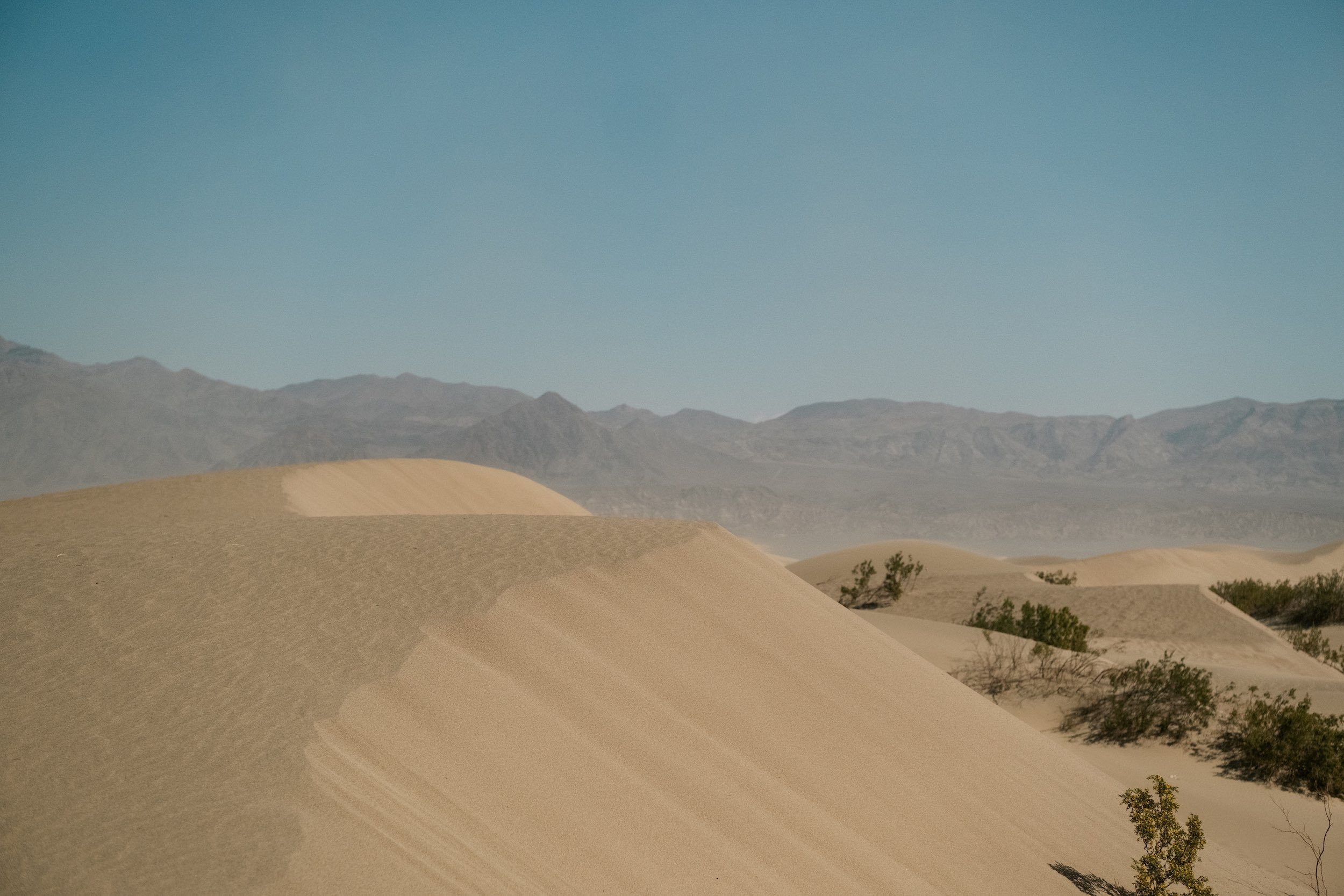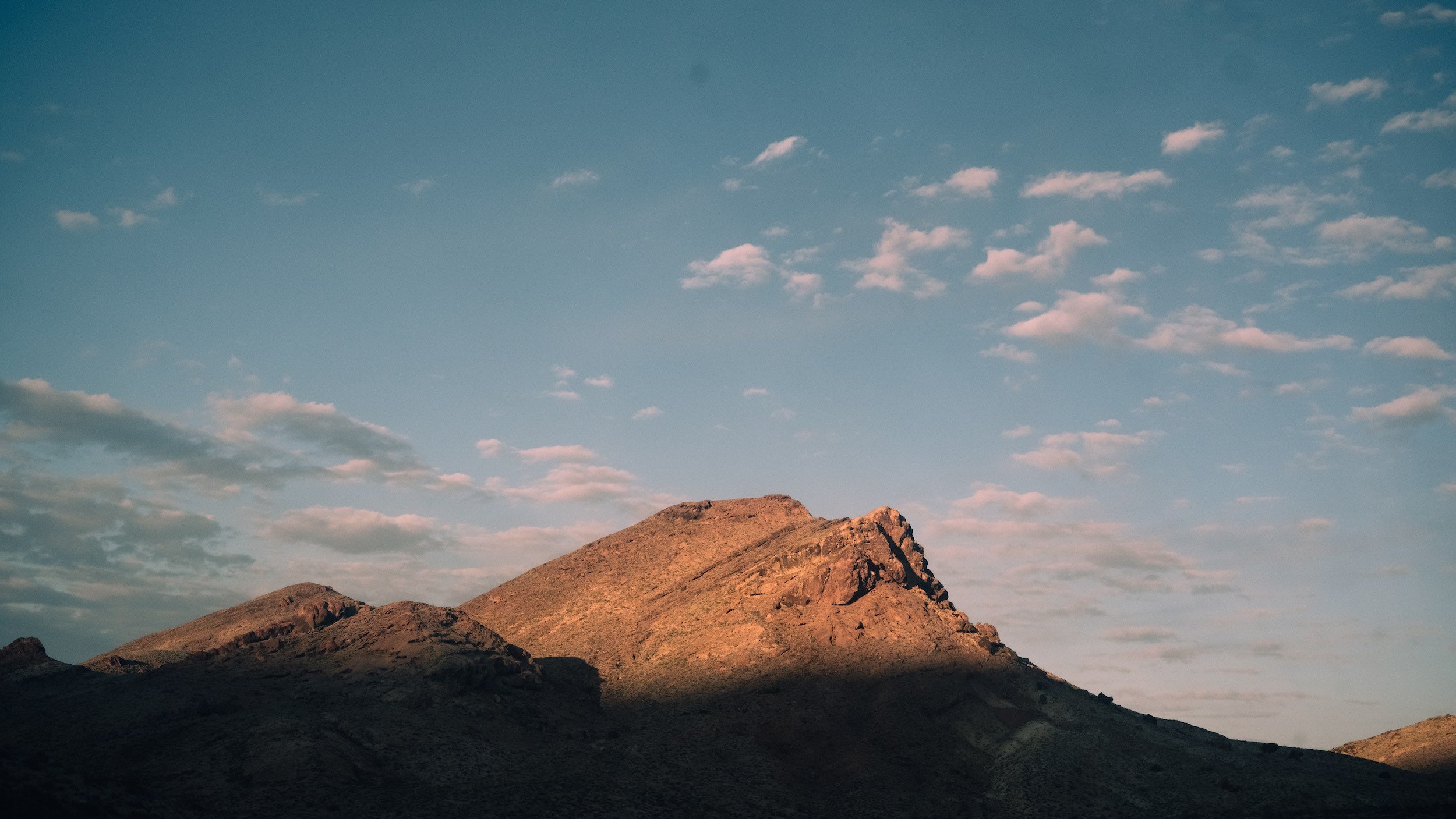On the Edge of Death
A Photographic Dispatch from Death Valley National Park
“It’s fun to build the impossible” — Ed Ringle
In March of 2022, we drove a little over five hours from our apartment in Sparks to Beatty, Nevada, located nine miles outside of Death Valley.
The town of six hundred looked as though it had seen better days. It was prime tourist-season for the national park, but there were only a dozen cars in the Stage Coach Hotel & Casino parking lot. Across the street, dust-covered eighteen-wheelers idled in a large dirt pull off. A driver shared a bag of chips with one of the wild burros that lingered near a metal barrel of trash. The donkey was surprisingly patient, perfectly content with this newfound symbiotic relationship.
Every now and then, a passing car would stop. Children climbed out of RVs and mini vans to brush their hands over the burros’ matted flanks. Their parents took pictures for Instagram and Snapchat, beckoned the herd over with offers of peanut butter sandwiches and plastic cups of applesauce.
In the distance, a sign for El Sueño Resort, Hotel, and Casino towered above a seemingly abandoned lot. The land belonged to Ed Ringle, the same man who’d bought up the majority of the town. He’d dreamed of opening the first fully Spanish-speaking resort of its kind, complete with an indoor water park and a five-hundred room high rise. But over the last thirteen years, all of that had died.
“I wasn’t very worried” — Chirlett reed
We walked downtown shortly after checking in. We lingered outside the Death Valley Nut and Candy Company, the stone courtyard landscaped with inexplicably lush flowers and palms. Further down the road, a man sold military surplus, water storage tanks, and used car parts at the Space Station R/V Park and Market.
On the main strip, we perused the menus of the only two open restaurants. Happy Burro Chili & Beer looked like little more than a shack, situated next to a historic building relocated from a ghost town six miles west. The patio was cosy and nostalgic, complete with a group of locals and a resident tortoiseshell cat. We drank glasses of the Budweiser they offered on tap.
Seven years ago, the bar had sheltered travelers stranded by a fire at a nearby hazardous waste dump. The eighty-acre site contained old clothing and equipment from the atomic age. Helicopters tested the air for radiation, but not everyone was overly concerned.
After all, as a girl, Chirlett Reed, now seventy-eight, had watched mushroom clouds bloom from the Nevada Test Site, only thirteen miles away.
“The patient is not dead” — Death Valley Superintendent Mike Reynolds
The next morning, we drove into Death Valley National Park. We passed by several cyclists on the way to our first hiking spot, the temperature climbing two, then four, then six degrees as we descended over three thousand feet in elevation.
There were only a few open spots in the Mesquite Flat Sand Dunes parking lot. A white Mercedes Sprinter van featured its owner’s social media handle and relevant hashtags. Two influencers in wide-brimmed hats took pictures with Tucki Mountain in the backdrop, pausing only to readjust the angles and lengths of their selfie sticks.
The sand scalded our sandaled feet pink. We soldiered on up the first peak, topped with a group of mesquites trees. The branches were nearly bare after a twenty–two year long megadrought, the driest period the Southwest had seen since 800 CE. In other areas of the park, even the long-lived creosote bushes had begun to die off, reduced to little more than scorched, skeletal frames.
Six years earlier, the area had received over a year’s worth of rain in a single day. A flash flood had buried nearby historic Scotty’s Castle in four feet of rocks and mud. The following spring, the land had been awash with Evening Primrose, Desert Gold, Sand Verbena, and Five-Spot, all sprung from a seed bank that had long lay dormant.
“Comfort has displaced hardship” — historic furnace creek inn advertisement
The following day, we explored the Furnace Creek Visitor Center and Oasis at Death Valley. The resort’s cheapest room cost over two-hundred dollars a night, tucked away near the all-grass, eighteen-hole golf course at the back of the property.
A mock town square, complete with a general store and ice cream shop, was reminiscent of Walt Disney’s Main Street, U.S.A. Tourists browsed turquoise jewelry, pottery, and other mass-produced Native American art beneath an antler chandelier in the gift shop. The Last Kind Words Saloon was also decorated with bleached bones and plenty of taxidermy—an elk, a mule deer, a snarling cougar, and a bison whose range had never extended as far southwest as the park.
We shared a cookie in the shade of one of the date palms that lined the property, imported from Africa in the 1920s by the Pacific Coast Borax Company.
Up the hill, we wandered through an eerie underground tunnel to the historic Furnace Creek Inn. The hotel had been renovated in the style of Old Hollywood, all sleekly upholstered furniture, terracotta tiles, and dark wood. The dining room offered a seared chicken breast and pork chop for thirty-six and fifty-nine dollars a pop. We drank prickly pear margaritas on a patio with a sweeping view of the tennis courts, the land striped green then brown where the resort’s irrigation stopped.
“I found my ship out here in the desert” — Marta Becket
On our last day, we ventured further east, just outside the park. We stopped at the Area 51 Center for gas, lured in by billboards advertising candy, nuts, liquor, and cat-house souvenirs. Plywood aliens peered from fake windows in the lime green facade, holding up peace signs as though to reassure us that they had no ill intentions. The attached, space-themed brothel was open 24/7, offering cold beer, hot girls, and free tours.
Twenty miles down the road, we branched off toward Ash Meadows. The wildlife refuge was home to twenty-four species that could be found nowhere else in the world, a biodiversity hot spot fed by fossil water dating back ten thousand years ago. We peered around aquamarine seeps and sloughs, searching for lizards, snakes, snails, and pupfish that never surfaced.
Covered in dust and tired from the sun, we finally arrived in Death Valley Junction. It was the hottest part of the day and the town was deserted, the farm-to-table cafe that had recently reopened now closed until further notice. The Amargosa Opera House and Hotel was also devoid of guests, many buildings in the adobe complex filled with debris and trash.
Even in its derelict state, it wasn’t hard to imagine what Marta Becket had seen when she’d first passed through the town in 1967: a chance to revive a special place that lingered in the liminal space between life and death. Between an ever-fleeting boom and an inevitable, catastrophic bust.

























